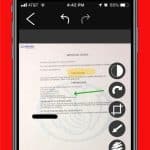Backendless Spotlight on Inkscreen
In this edition of Backendless Spotlight, we take a dive into a business-supporting mobile software company called Inkscreen and their application CAPTOR.
CAPTOR by Inkscreen “enables the secure capture and management of sensitive business-related content—scanned documents and photos, and video/audio recordings.” You can learn more about CAPTOR by visiting Inkscreen’s website.
Editor’s Note: If you or someone you know have an app using Backendless for its backend and would like to be considered for a future Backendless Spotlight, we want to hear from you! Send us an email with a link to the app or website and a description of how Backendless has helped them be successful.
About Inkscreen
CAPTOR was developed as a solution to a growing concern for businesses that handle highly sensitive information and documents: employees using their personal mobile device to capture sensitive proprietary information. CAPTOR works with Blackberry and MobileIron, among others, to offer a secure and reliable solution.
The application allows users to take and edit photos, scan documents, record video and audio, save files as PDFs, and much more, all in a highly secure manner. This way, businesses can still gain the productivity boost that employees find when using their mobile device without having to provide a secure device to every employee.
License Management Using Backendless
The CAPTOR application is made available for free because Inkscreen sells licenses to its customers. Some of these customers can purchase hundreds or thousands of licenses to cover all of their employees that may use the application. Initially, Inkscreen would simply access their MongoDB from a terminal to review, modify, add and update their clients’ licenses.
As Inkscreen has grown as a company, the management of client licenses had become more and more of a challenge, and as a result, the company decided that it needed a better solution. Their previous approach was extremely cumbersome and was ultimately leading to errors where licenses were not being properly tracked and updated. The result was confusion between Inkscreen and their clients about how many licenses were used and how many were available.
At first, Inkscreen elected to attempt to build a frontend GUI for their existing license database. As one might expect for a software company, developer time and availability is in high demand. Thus, a developer had to be pulled from another project and assigned to the license management frontend task.
After two weeks of development, a solution was “complete” but the result was clunky, inefficient, and just didn’t really solve the problem in an elegant way. With the developer needed back on internal projects, Inkscreen founder Josh Bohls decided it was time to turn to outside help.
Enter Backendless
Not wanting to take any more time from his internal team members, Bohls had the Backendless Professional Services team handle the project completely. Given just a one-page requirements document from Bohls, the Backendless team was able to build a flexible, easy-to-use, and highly efficient license management system for Inkscreen.
Following testing and a few small tweaks to make the system match their needs, Inkscreen was able to deploy the system and overcome one of their biggest pain points as a business while keeping their internal development teams focused on improving CAPTOR and maximizing value for their clients.
If you’d like to try your hand at building your own license manager using Backendless API Services, you can follow this guide. Wanting Backendless to take on a development project for you? Check out our Consulting Services page and contact us today!





